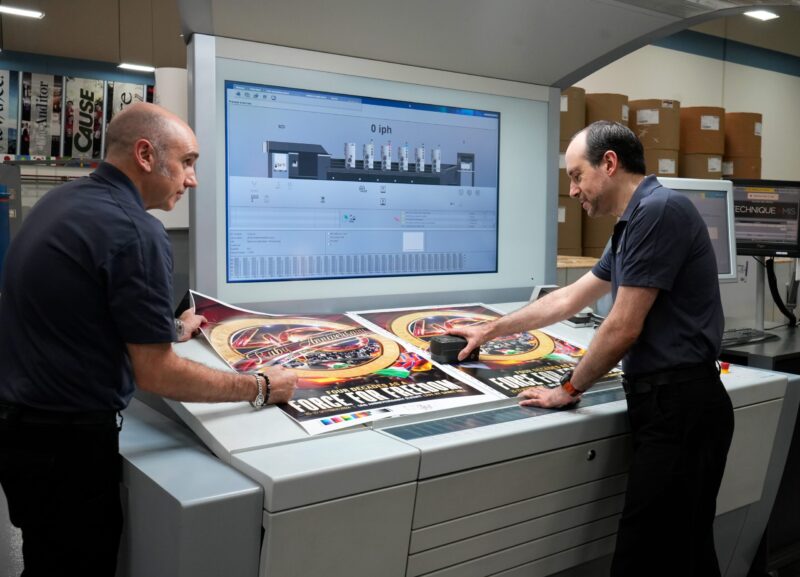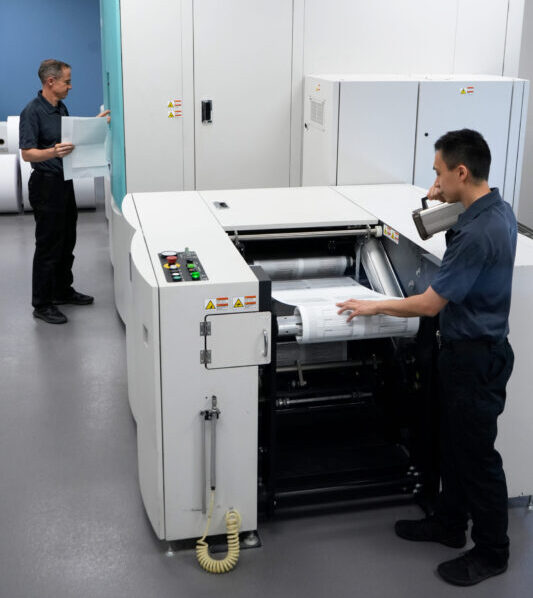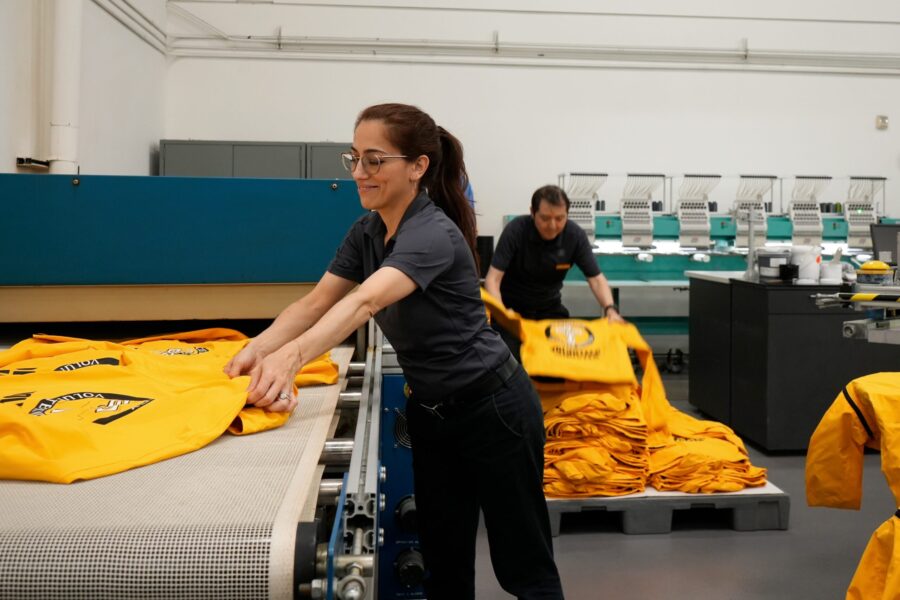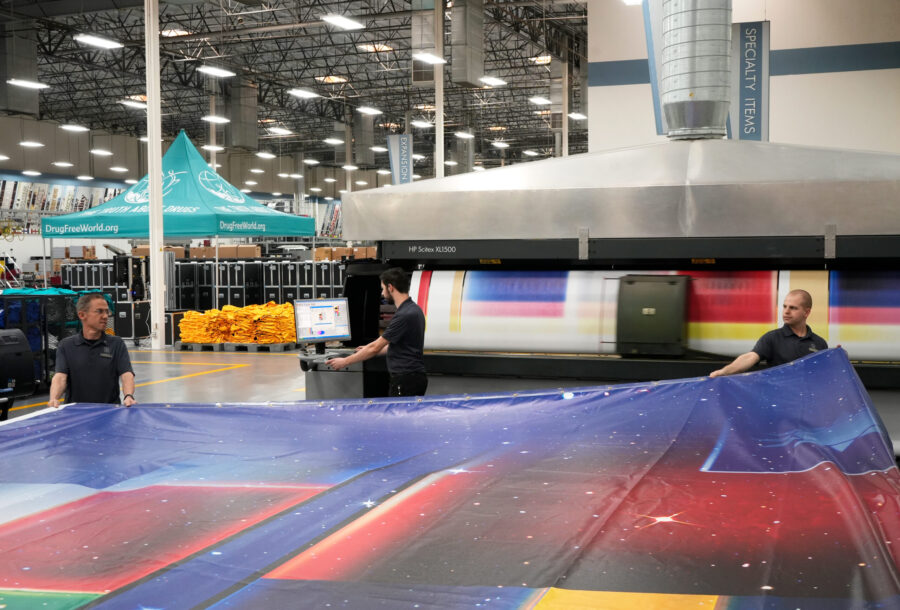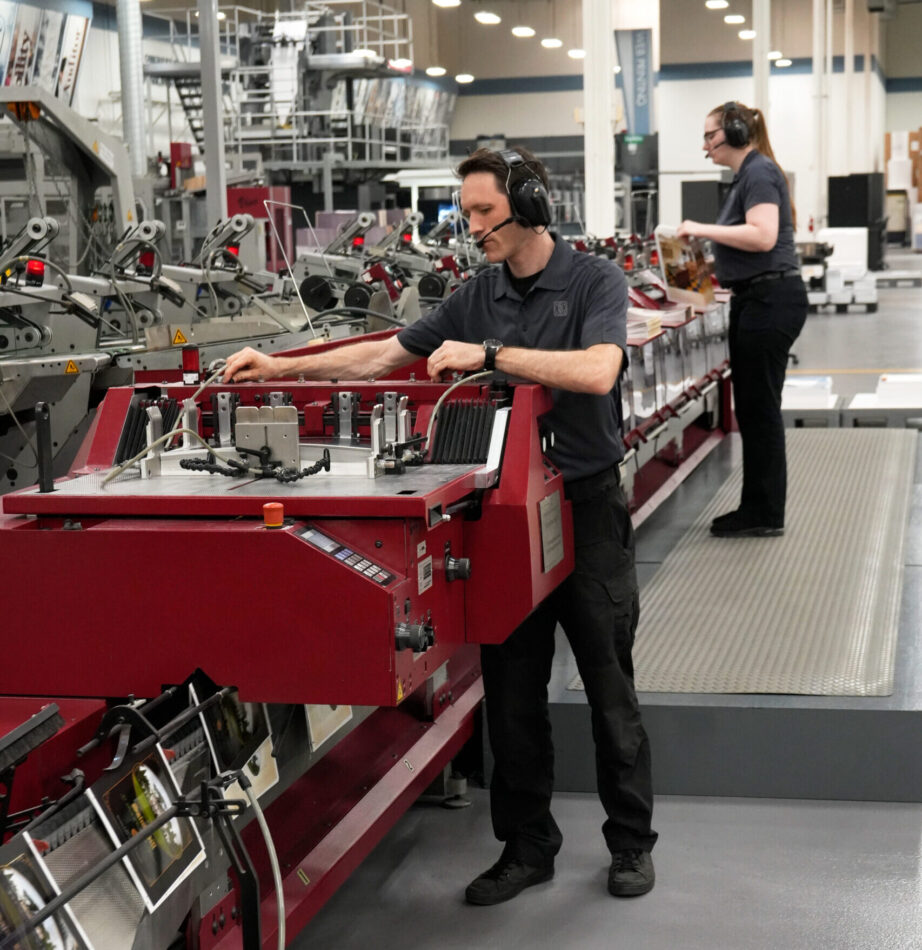Efficiency, Automation, and Purpose
Inside Scientology’s Award-Winning In-plant
November 1, 2024
Only 14 years old, the Church of Scientology International Dissemination & Distribution Center has become one of the largest and most efficient in-plants in the U.S., winning major awards for its exceptional high-quality printing.
In In-plant Impressions' annual ranking of North America’s largest in-plants, two types of organizations typically rise to the top of the list: Government agencies and religious organizations. Among the latter, the Church of Scientology International Dissemination & Distribution Center (No. 7 by staff size) stands out, both because of its impressive growth (volumes are up 33% over last year) and its relative youth.
Where some religious in-plants were established more than a century ago, the Church of Scientology’s Commerce, California-based in-plant only came into being in 2010. In the ensuing 14 years, it has expanded tremendously to encompass not only 115 million impressions of printing per month, but a thriving wide-format business, a busy garment-printing operation, a booming mail center, and much more.*
What may be most unique about this 100-employee operation is that almost none of its operators had any printing experience prior to running the web and sheetfed offset equipment in its cavernous 185,000-sq.-ft. facility, located about eight miles from downtown Los Angeles.
Drawing from the principles of Study Technology developed by Scientology Founder L. Ron Hubbard, which asserts that anyone can learn anything, church members studied the trade at Cal Poly and got on-the-job training in the pressrooms of the church’s printer partners. Thus prepared, they jumped right in and started running the in-plant’s presses, which include a six-unit Goss Sunday 2000 heatset web press, a five-color Heidelberg Speedmaster XL 105 with coater, an HP Indigo 7200, and a Fujifilm J Press 540W inkjet press.
Over time, in-plant team members have become graphic arts experts, so much so that the in-plant has won Best of Show in the In-Print contest three times since 2016, including this year (see sidebar below). Printing top-quality pieces is a priority for the in-plant.
“The viewpoint on quality standards is woven into our entire organization,” explains Pressroom Manager Jud Posner, noting the quality of the printing impacts people’s perception of the church. “That product of the in-plant is the ambassador of the parent organization to the wider world.”
“The viewpoint on quality standards is woven into our entire organization. That product of the in-plant is the ambassador of the parent organization to the wider world.
—Jud Posner
Magazines in 22 Languages
The chief printed product of the Dissemination & Distribution Center is magazines, which the in-plant prints in more than 22 different languages. These are printed on its Goss Sunday 2000 web press, a rare device in the in-plant world. When the run for one language is done, the black plate containing the text for the new language is switched in while the press is running, a process known as Goss Automatic Transfer technology.
“The C, M, and Y are set and rolling, and then your black is basically what’s changing,” says Plant Manager Angela Furness. “It keeps the colors even.”
To keep the church’s millions of members informed and fulfill its social improvement goals, the in-plant also prints promotional materials for more than 10,000 churches, missions, and affiliated groups, such as brochures, flyers, direct mail pieces, and educational materials. Its signage operation, armed with a 16.4-ft. HP Scitex XL1500 grand-format printer and four 60" HP Designjet Z6100 printers, outputs a high volume of banners, billboards, door signs, reverse-printed acrylics, vintage photographs, and more.
Wide-format work makes up 10% of the in-plant’s business, Furness says. Each of the church’s 82 (and growing) “Ideal Organizations” around the world requires an average of 1,600 pieces of signage, she notes, all of it printed or procured by the in-plant.
In addition, the in-plant has started printing graphics for a series of 17x17-ft. mobile exhibits that will combine print with audiovisual presentations to foster community outreach in the areas of drug education, human rights, mental health reforms, and Scientology’s nonreligious moral code, The Way to Happiness.
To meet increasing demands for printed materials, the Dissemination & Distribution Center installed a cut-sheet inkjet press eight years ago, a Fujifilm J Press 540W.
“It’s a tank,” says Posner. “It serves our purposes great.”
Adding inkjet was a strategic decision designed to relieve the workload its offset and digital presses were enduring at the time.
“We found ourselves in 2015 in the situation where our sheetfed press was over capacity. We couldn’t keep up with the demand,” he says. “We did a whole analysis of the work that was going on the press and found that some of the jobs … were better suited for digital.”
Since the HP Indigo the in-plant had at the time was also at capacity, inkjet was the answer. “It brought down that stress on both the digital and the sheeted press,” says Furness. “It basically amplified our production.”
We did a whole analysis of the work that was going on the press and found that some of the jobs … were better suited for digital.”
— Jud Posner
Today, with volumes up significantly since 2016, she says the in-plant is looking to expand again, and plans to add either a digital toner or inkjet press within the next six to 12 months.
Importance of Automation
Keeping all this equipment running and productive, even with the skilled operators it has, wouldn’t be possible without employing a considerable amount of automation, Posner notes.“We’ve always been very heavy on the automation. Our whole goal is to increase efficiency and output,” he says.
The web press boasts a robotic bundler, stacker, and palletizer. “That enables us to run with a pretty lean crew,” he points out.
The sheetfed press employs Heidelberg Prinect Inpress Control to minimize color variations and cut makeready times.
The shop’s saddle stitcher and perfect binder have automated stream feeders, he says, and a robotic crane system on the stitcher allows a single operator to load all eight pockets while the machine is running 11,000 magazines per hour. For quality control, barcodes on signatures are read by the stitcher’s cameras.
“If you accidentally have someone load Italian or French, it would trigger and stop the machine so it doesn’t bind in a wrong signature,” remarks Furness. “Automation is a big deal.”
The International Dissemination & Distribution Center includes a busy mail center, capable of mailing 3.2 million pieces every month. It also manufactures shirts, caps, and jackets sporting emblems of individual churches or organizations, as well as uniforms for volunteers in church-supported programs. The uniforms worn by the in-plant’s own staff are produced here too.
Like any nonprofit organization, the Church of Scientology was looking to save money when it opened its in-plant in 2010, and it succeeded. Furness estimates current savings are 40% less than what it would cost to outsource. But also important was having the ability to control its printing schedule as well as the quality of its products. Being able to produce multiple language versions was another big reason for bringing printing in-house.
A Clean, Efficient Operation
The decision to open an in-plant has been a success on all levels. The two-shift operation continues to watch its volumes soar.“We’re running about 2.8 million impressions on our digital presses per month,” says Posner, “and about 7 million impressions on our offset” — which equates to 112 million 8.5x11" pages per month, he adds.
Despite those heavy volumes, the inside of the International Dissemination & Distribution Center is spotless, with no bottles of chemicals or scraps of paper lying about. This focus on cleanliness is not only in-line with church teachings, Posner says, it just makes sense.
“If you have a clean environment, it’s easy to see where things are,” he points out. “Having things well organized is very important to us.”
Pride and Professionalism
It’s also a reflection of the pride employees feel in their workplace, he says. This, combined with the uniforms worn by the team, contribute to a sense of professionalism and “esprit de corps,” he says.“It makes our team a team,” Posner notes. “And it reflects in the product.”
Time is set aside daily in the plant for the study of church scriptures, and doing this, he says, has a direct impact on the staff’s proficiency and efficiency.
“We find that knowledge of scriptures directly affects our staff being more effective at their technical professions,” he says.
For example, a teaching method in Scientology known as Study Technology emphasizes the idea of “word clearing,” in which readers are encouraged to look up the meaning of words that they don’t understand. Furness cites an incident where an operator was having paper jamming problems on the web press, so he turned to the manual, looked up unfamiliar words until he fully understood the issue, then made adjustments to the web press and fixed the problem.
“We apply Scientology ‘technology of organization’ [principles] to all of our production, and we feel that that really brings about a very efficient and productive team,”
Posner says. “The idea from the beginning was always to be able to reach the broadest number of people possible so that the religion can continue to expand. Behind the very efficient production is also a very strong purpose, which drives the work and, honestly, motivates the staff.”
Behind the very efficient production is also a very strong purpose, which drives the work and, honestly, motivates the staff.
— Jud Posner
Sidebar: Quality Printing Rewarded
In a unanimous decision, the five judges in the In-Print 2024 contest, the only printing contest exclusively for in-plants, selected a portfolio project printed by the Church of Scientology’s International Dissemination & Distribution Center as the Best of Show winner for the offset categories. It was the third Best of Show award for the Church of Scientology’s in-plant and an affirmation that the in-plant’s focus on quality has paid off.“We knew that was a risky piece to enter because of all the components, but we felt it was so well made,” reflects Pressroom Manager Jud Posner, who accepted the award during the In-plant Printing and Mailing Association conference in June.
Those components included brochures, booklets, reply cards, and other printed sheets inserted into the portfolio, which was given to registrants of Narconon drug and alcohol rehabilitation programs to tell them what to expect. All pieces were printed on the in-plant’s five-color Heidelberg Speedmaster XL105 with coater. Though the judges looked hard for inconsistencies in the color on each piece, they found none. Every element in the portfolio matched perfectly.
Quality is crucial for the in-plant, Posner says, and its importance traces its roots to Church of Scientology Founder L. Ron Hubbard.
“Mr. Hubbard himself stressed in his organizational policies that quality is important, both print and presentation,” Posner says, “and sometimes the only thing someone out in the world is going to know about your organization is the printed piece produced by the in-plant.”
In-plant Snapshot
Church of Scientology International
Dissemination & Distribution Center
Commerce, CaliforniaKey Equipment:





